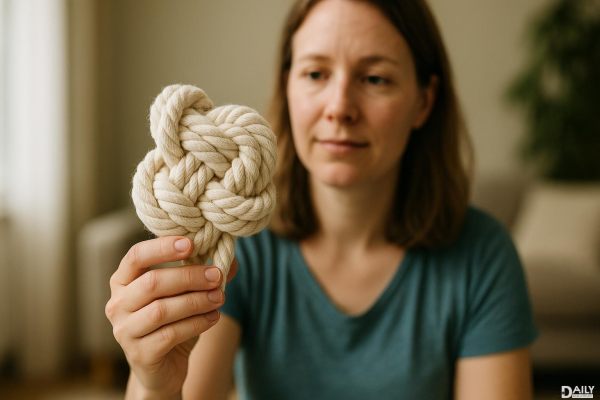If you're dealing with inflammation pain, yoga might just be the gentle yet powerful ally you've been searching for. While popping a pill can offer quick relief, incorporating yoga into your routine can address inflammation at its root by reducing stress, improving circulation, and promoting relaxation. But here's the kicker—not all yoga is created equal when it comes to fighting inflammation. The right style, practiced mindfully, can make all the difference between soothing your aches and accidentally aggravating them.
Why Yoga Works for Inflammation
Inflammation is your body's natural response to injury or illness, but when it sticks around too long, it can lead to chronic pain, stiffness, and even more serious health issues. The magic of yoga lies in its ability to calm the nervous system, lower cortisol (the stress hormone that fuels inflammation), and improve blood flow to tense or injured areas. Studies have shown that regular yoga practice can reduce inflammatory markers like C-reactive protein (CRP) and interleukin-6 (IL-6), which are often elevated in chronic conditions like arthritis, heart disease, and autoimmune disorders. So, while yoga won’t replace your doctor’s advice, it can be a game-changer in managing inflammation holistically.
Best Yoga Styles for Inflammation Relief
Not all yoga classes are created equal—some are better suited for inflammation than others. If you're dealing with joint pain or stiffness, a fast-paced Power Yoga class might do more harm than good. Instead, opt for gentler, more restorative practices that prioritize relaxation and deep stretching. Here are the top styles worth trying:
Restorative Yoga: This is the ultimate chill-out session. Using props like bolsters, blankets, and blocks, you’ll hold poses for several minutes to encourage deep relaxation. Since stress is a major inflammation trigger, this style helps by lowering cortisol and activating the parasympathetic nervous system (your body’s "rest and digest" mode).
Yin Yoga: Similar to Restorative but with a slightly more active approach, Yin targets connective tissues with long, passive holds (usually 3-5 minutes per pose). It’s fantastic for improving joint mobility and releasing tension in areas like the hips, lower back, and shoulders—common trouble spots for inflammation sufferers.
Vinyasa (Slow Flow): If you still want movement without the intensity, a gentle Vinyasa class can help. The key is to keep it slow and controlled, syncing breath with movement to enhance circulation without overexerting inflamed joints.
Kundalini Yoga: Known for its focus on breathwork (pranayama) and spinal flexibility, Kundalini can help release stagnant energy and improve nerve function, which is especially helpful for inflammatory conditions like sciatica or fibromyalgia.
Poses That Target Inflammation Hotspots
Certain yoga poses are particularly effective at easing inflammation in problem areas. Here’s a breakdown of the best ones to incorporate into your routine:
Child’s Pose (Balasana): A go-to for lower back and hip tension, this pose gently stretches the spine while promoting relaxation. If your knees are sensitive, place a blanket under them for extra cushioning.
Legs-Up-the-Wall (Viparita Karani): Great for reducing swelling in the legs and improving circulation, this passive inversion is a must for anyone with edema or poor circulation.
Cat-Cow (Marjaryasana-Bitilasana): This gentle spinal movement helps lubricate the vertebrae and ease stiffness in the back—ideal for arthritis or disc-related inflammation.
Reclining Butterfly (Supta Baddha Konasana): Opens the hips and groin while encouraging deep belly breathing, which helps calm the nervous system.
Corpse Pose (Savasana): Don’t skip this one—it’s where the real magic happens. Lying still for even 5-10 minutes allows your body to fully absorb the benefits of your practice and reset your stress response.
Listen to Your Body—Not Just the Instructor
One of the biggest mistakes people make with yoga (especially when dealing with inflammation) is pushing too hard. Unlike high-intensity workouts, yoga for inflammation should feel nurturing, not punishing. If a pose causes sharp pain, back off immediately. Discomfort is normal, but pain is your body’s way of saying, "Hey, we’re not ready for this yet." Modify poses as needed—use props, reduce the range of motion, or skip anything that doesn’t feel right. Remember, yoga is about meeting your body where it is today, not where you think it should be.
Breathwork: The Secret Weapon Against Inflammation
Your breath is one of the most powerful tools for reducing inflammation. Deep, diaphragmatic breathing activates the vagus nerve, which helps switch your body from "fight or flight" to "rest and repair." Try incorporating these simple techniques into your practice:
4-7-8 Breathing: Inhale for 4 counts, hold for 7, exhale for 8. This slows the heart rate and signals relaxation.
Alternate Nostril Breathing (Nadi Shodhana): Balances the nervous system and reduces stress hormones linked to inflammation.
Ocean Breath (Ujjayi): A slow, controlled breath that builds heat gently—great for warming up stiff joints without overdoing it.
When to Skip Yoga (and See a Doctor Instead)
While yoga is generally safe, there are times when it’s best to pause and get medical advice first. If you have acute inflammation from an injury, infection, or autoimmune flare-up, check with your doctor before starting any new movement routine. Certain conditions—like severe osteoporosis, recent surgery, or uncontrolled hypertension—may require modifications or temporary avoidance of certain poses. And if you notice increased pain, swelling, or redness after practicing, don’t ignore it. Your body knows best.
At the end of the day, yoga isn’t a cure-all, but it’s a powerful tool in your anti-inflammation toolkit. Pair it with a balanced diet, good sleep, and proper medical care, and you’ll be well on your way to feeling better—one mindful breath at a time.
























